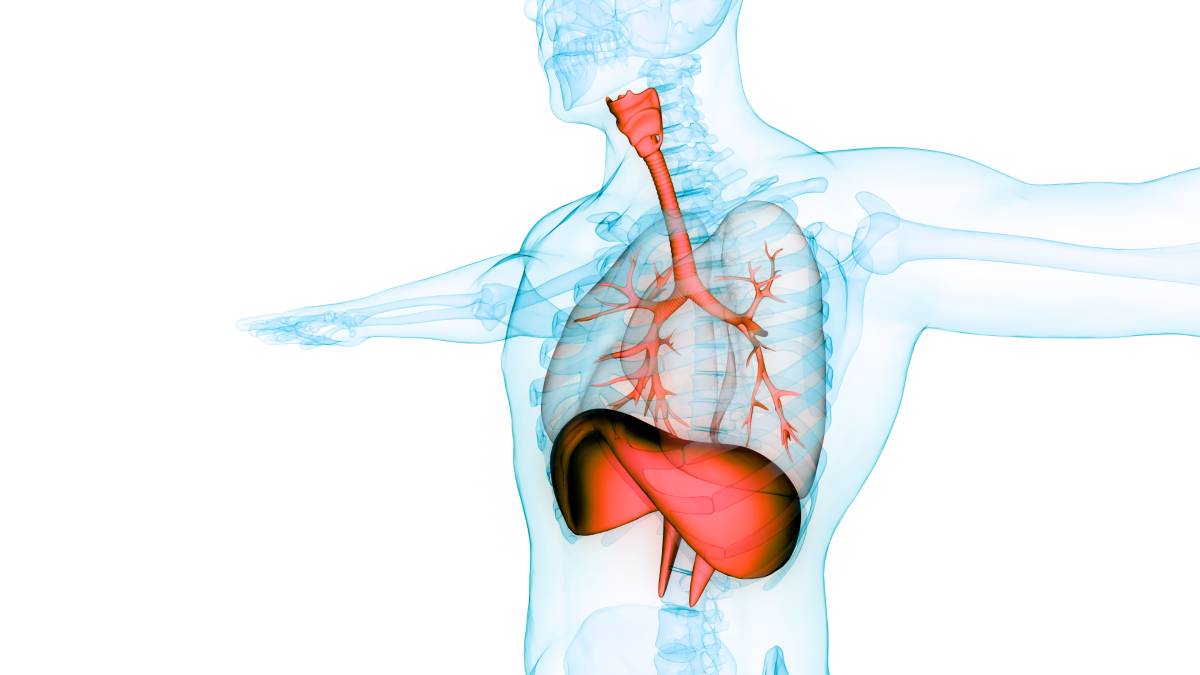What is Diaphragmatic Breathing?
Diaphragmatic breathing, also known as abdominal breathing, is a breathing technique that emphasizes the contraction and relaxation of the diaphragm, a dome-shaped muscle located at the base of the lungs. This method of breathing promotes efficient oxygen exchange and may have a number of benefits for physical, mental, and emotional well-being 1.
During diaphragmatic breathing, the diaphragm contracts and moves downward, creating a vacuum in the chest cavity. This downward movement expands the lungs, allowing air to enter deeply into the lower regions of the lungs. As the diaphragm relaxes, it moves upward, pushing air out of the lungs 2. In contrast to diaphragmatic breathing, shallow breathing primarily involves the use of the chest muscles and results in limited expansion of the lungs. Shallow breaths can lead to inadequate oxygenation and increased tension in the muscles of the neck and shoulders.
Diaphragmatic breathing offers a host of benefits to individuals 3,4. First, it maximizes the exchange of oxygen and carbon dioxide in the lungs, resulting in improved oxygenation of the blood. This can enhance overall vitality, energy levels, and cognitive function. Second, it activates the body’s relaxation response, promoting a sense of calm and reducing the physiological effects of stress. By engaging the parasympathetic nervous system, diaphragmatic breathing can lower heart rate, blood pressure, and cortisol levels, helping to alleviate anxiety and tension. Relatedly, it stimulates the vagus nerve, which plays a key role in digestion and gastrointestinal function. Diaphragmatic breathing may help alleviate symptoms of digestive disorders. Finally, practicing diaphragmatic breathing strengthens the diaphragm and other respiratory muscles, improving lung capacity and efficiency. This can be particularly beneficial for individuals with respiratory conditions such as asthma, chronic obstructive pulmonary disease (COPD), or bronchitis.
In order to practice diaphragmatic breathing, you must first get into a comfortable position. Sit or lie down in a relaxed position, with your spine straight and your shoulders relaxed. Place one hand on your chest and the other hand on your abdomen, just below the rib cage. Inhale slowly and deeply through your nose, allowing your abdomen to expand as you breathe in. Your chest should remain relatively still while your abdomen rises. Exhale slowly and completely through your mouth, gently drawing your abdomen inward as you breathe out. Continue this slow, rhythmic breathing pattern. It is important to practice diaphragmatic breathing for several minutes each day, gradually increasing the duration as you become more comfortable with the technique 3.
Diaphragmatic breathing has only a few risks. It may actually worsen anxiety symptoms if a person feels that the treatment is not working. In addition, individuals who have respiratory conditions such as asthma or COPD should be cautious when practicing diaphragmatic breathing for the first time. It is important to note, too, that diaphragmatic breathing is not always useful as a standalone treatment 5.
This technique is a simple yet powerful way to promote relaxation, stress reduction, and improved respiratory function. Incorporating diaphragmatic breathing into a daily routine can greatly enhance overall health and well-being.
References
1. Learning diaphragmatic breathing – Harvard Health. Available at: https://www.health.harvard.edu/healthbeat/learning-diaphragmatic-breathing. (Accessed: 9th May 2024)
2. Diaphragmatic Breathing and Its Benefits. Available at: https://www.healthline.com/health/diaphragmatic-breathing#how-it-works. (Accessed: 9th May 2024)
3. Diaphragmatic Breathing Exercises & Benefits. Available at: https://my.clevelandclinic.org/health/articles/9445-diaphragmatic-breathing. (Accessed: 9th May 2024)
4. Yau, K. K. Y. & Loke, A. Y. Effects of diaphragmatic deep breathing exercises on prehypertensive or hypertensive adults: A literature review. Complement. Ther. Clin. Pract. 43, (2021). DOI: 10.1016/j.ctcp.2021.101315
5. What is diaphragmatic breathing? Benefits and how-to. Available at: https://www.medicalnewstoday.com/articles/diaphragmatic-breathing#risks. (Accessed: 9th May 2024)
